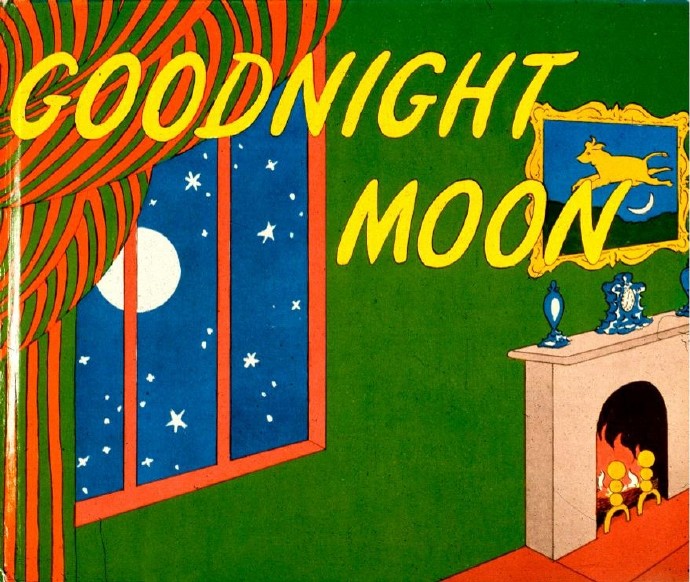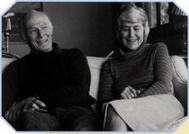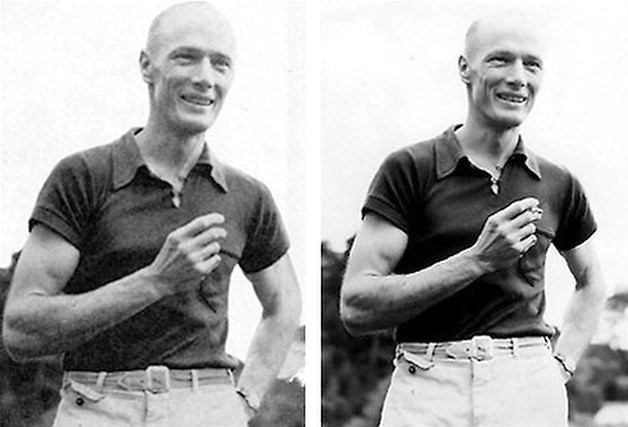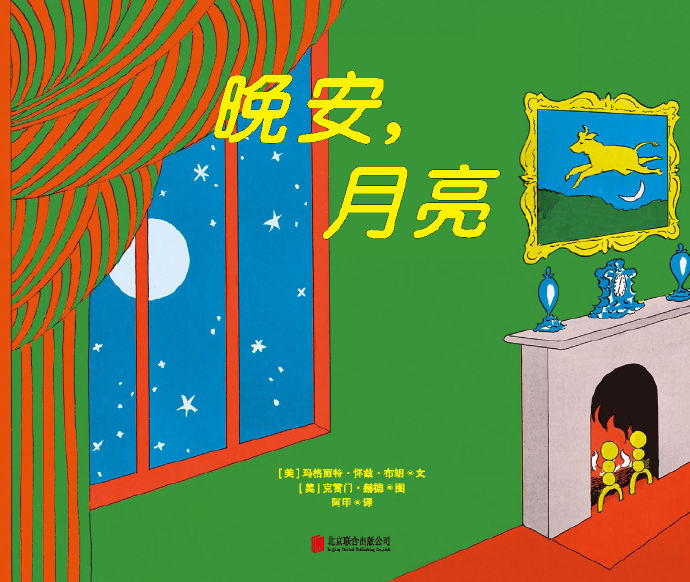
There is a large green room with a red floor, a red bed, and a red balloon hanging in the air; the quilt on the bed is green, the bedside table is yellow, the telephone is black, the small rug beside the bed is a tiger skin with black and yellow stripes, and the large round rug in the center of the room is light pink; there are two paintings hanging on the wall, one of which is a cow jumping over the moon, and the other is a picture of three little bears sitting on a chair. The background of the picture is blue, and looking out the window of the room, the night sky dotted with stars is deep blue.…Oh, we also missed the most important character — the little rabbit sitting on the bed in pajamas. It looks like he is going to say good night to us.
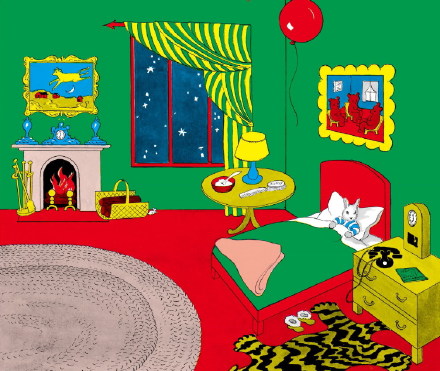
The above is just a rough outline of the first page of the picture book “Goodnight Moon”. In terms of quantity, there are at least half of the things in the room that I haven’t mentioned. However, the text on this page is very simple:“In the big green room
/ Have a phone / A red balloon /
There are two more paintings——”After reading this, the reader may habitually want to turn to the next page, but the child listening to the story is more likely to want to find something in the picture, and may even prompt: You haven’t talked about the little rabbit on the bed yet.
from1947Since Goodnight Moon was published in 1999, generations of readers, young and old, have had similar reading experiences: adults read the minimal text in the book (fortunately it rhymes), while children find various things in the pictures (especially the tiny mouse running around), and then slowly chant “Goodnight, Moon” all the way.”“Good night, that”, I calmed down unconsciously, and finally fell into a sound sleep.
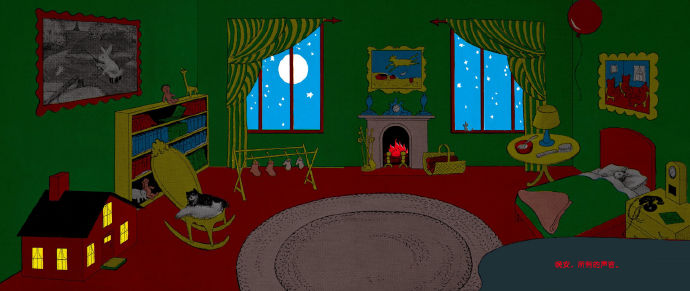
Goodnight Moon is a very magical book. Children may fall in love with it unconsciously, but their superficial reaction is very quiet. Adults may find it difficult to resonate with it immediately because children are “bland”.”The reaction was that this was just an ordinary bedtime book, too simple to arouse people’s interest. But the interesting thing is that when those children grew up and became parents, they would spontaneously find this book and read it to their own children with piety.——I’m not kidding, this is indeed the original experience of “Goodnight Moon”.
Although today, Margaret·Wise Brown and Clement·The book that Hurd and Hurd collaborated on is regarded as a classic among picture book classics. Its importance and popularity even surpassed their other collaboration, The Runaway Bunny. However, when it was published, the response from American children’s book critics was quite lukewarm. The New York Public Library, regarded as an authority in the children’s library world, even refused to include it on its recommended reading list, which also led to mediocre sales performance in the first few years.1947It was only sold in the autumn of that year.6000Ben, until1953In 2016, the annual sales volume was1500Ben was hesitating. And Margaret was almost at the same time“Golden Children’s Book”The series of “Five Little Firefighters” was sold out in the first year17She sold 10,000 books a year and then over a million the following year. She is a bestseller in the children’s book world.
In fact, it is normal for adults to not fully accept this book at first.·Carl (creator of “The Very Hungry Caterpillar”) admitted in an interview that when he first encountered “Goodnight Moon,” he didn’t understand the book’s appeal. By then, he was already an adult, hoping to find the secret to creating picture books. However, as he gained more creative experience and engaged more deeply with children, he gradually understood why such a simple book could have such a magical effect.
There is also a scholar named Leonard·S.As a young man, Mr. Marcus was deeply fascinated by the writing and study of poetry. He stumbled upon this children’s book in a bookstore and was struck by the thought: “Isn’t this a poem?” It was a poem, rather mysterious and richly symbolic. As a poet, he was instantly captivated! He was curious about the author, Margaret, and this curiosity led him into the world of children’s literature. He later spent ten years compiling Margaret’s biography, “Waking by the Moon,” and from there, he gradually delved deeper into the subject, becoming a renowned critic and historian of children’s literature. Thanks to his meticulous and passionate compilation and research, we now have a clear understanding of the entire process of the creation of this remarkable book.
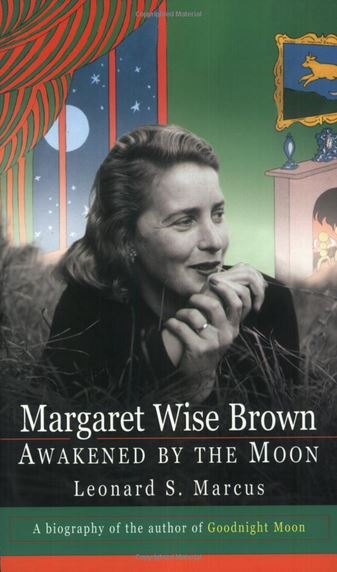
Awakened by the Moon: A Biography of Margaret Wise Brown
Leonardo S. Marcus took 10 years to complete
It is said that Goodnight Moon is1945One morning in 1989, Margaret woke up and finished the first draft in one go. Usually, this only takes20She spent about 10 minutes on the project. Unsure if it was a publishable work, she called Harper’s editor, Ursula, a legend in the American children’s book world and a highly innovative editor who had published Margaret and Clement’s The Runaway Bunny a few years earlier. Ursula loved the idea and signed it off almost immediately. Thus began the long process of polishing the manuscript and waiting for the illustrator.
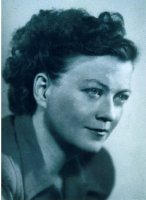
Legendary editor Ursula Nordstrom, circa 1946
Margaret decided from the beginning that the most suitable illustrator for this book was Clement·Hurd, she never seemed to doubt it. Although she collaborated with many illustrators at the same time, some of her works brought her high prestige and income at the time, which could afford the rather luxurious life she was willing to live, but this book was very special to her, and it was obviously a very challenging book in the children’s book world at the time. She had to ask Clement, who had a very calm personality, to draw it. She and Clement were extremely predestined. Clement was the son of a banker and a top student at Yale University, but he was unwilling to follow in his father’s footsteps. He went to Paris to study art, and when he was penniless, he ran back to the United States to engage in design and art creation. At that time, Margaret had completed further studies in early childhood education and children’s literature creation at the famous Bank Street School of Education. She was the “here and now” advocated by her mentor Michel.”(Here
and
Now) are important members of the concept story creation team. They emphasize that stories must be consistent with the current life experiences of children.1937In 1996, Margaret published her first children’s book and became the children’s book editor of Scott Publishing Company. It was in this position that she discovered the talent of Clement, who was still wandering around, for children’s book illustrations. She published his first book and invited him to study at Bank Street College of Education, thus introducing him to the fascinating world of children’s books. At the same time, she was also working for“Here and Now”Her classmates and colleagues in the creative team published books, including her close friend Edith Thatcher (nicknamed “Percy”). Later, Clement and Percy got married, and Margaret naturally became the couple’s most special friend.
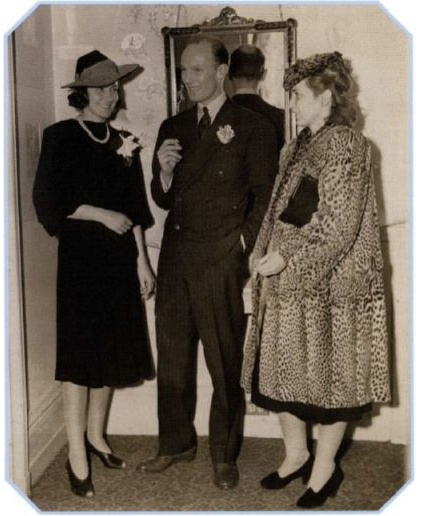
Photo of Percy (left), Clement Hurd (center), and Margaret (right) (1940)
Margaret assured Ursula that Clement was the perfect person to illustrate “Goodnight Moon.” Ursula obviously agreed, but the problem was that he was not in the United States at the time. He was serving in the US Air Force, most likely in the Pacific Theater fighting the Japanese. Who knew when that damned world war would end? Who could guarantee that the soldier who painted “The Runaway Bunny” would ever return alive?
1945One night before Christmas, Clement finally returned to New York. It was one in the morning when Percy met him at the train station. They took a taxi to Margaret’s apartment in New York and found that the door was not locked. The room was softly lit, with flowers and soft music playing. The fur blankets that Margaret liked were spread everywhere. However, the hostess was nowhere to be found. She left the whole house to the reunited couple.…That very next day, she handed the illustration work of “Goodnight Moon” to Clement!
Looking back today, we can see how much Margaret valued this work. However, at that time, how did she know that this would be one of her most important works? How could she be sure that the illustrator had to be Clement? In fact, the editor Ursula was not 100% sure at the time.1946Year1moon25In a letter she wrote to the writer on the 15th, she continued to ask, “Can you give me another copy of the manuscript for Goodnight Moon? I want to try to find another painter…””(See Ursula’s collection of letters, Dear Genius.) Ursula’s concerns are very understandable, because it often takes a long time for a wanderer who has returned from a bloody battlefield to regain his composure and return to normal work, not to mention creating works that can bring joy to children.·After returning from the Chinese battlefield, DeJong (who later became the first American writer to win the Hans Christian Andersen Award) spent nearly5It took years to return to its original creative state!
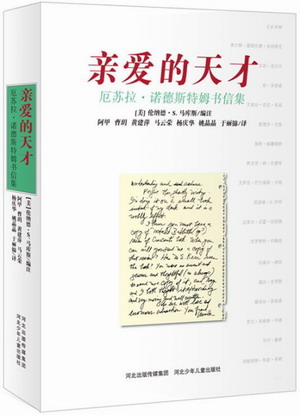
Cover of the Chinese edition of Ursula’s Letters
Clement could be said to have created a miracle: after several rounds of adjustments and revisions,1946Year3By the end of the month, he had created a prototype that satisfied both Margaret and Ursula! He then worked diligently throughout the spring, finally completing the first draft that roughly resembles the one we see today. Little written record remains of the process of drawing and discussing the book, likely due to the close relationship between the three, as communication was conducted in person and over the phone. What we do know is that Clement’s original cover included the bunny, but was removed at Ursula’s suggestion, as she wanted young readers to see themselves as the protagonists of the book. The basic idea for the large room came from Margaret, who suggested drawing from Matisse’s “The Red House,” but with a large green background, both to create a peaceful bedtime atmosphere and as a symbol of peace. Overall, however, the drawing process flowed smoothly. Can you imagine such a calming and captivating children’s picture book coming from a soldier who had just returned from World War II? Clement wasn’t a father yet; his and Percy’s son wouldn’t arrive for another three years. Perhaps it was Margaret’s poem that inspired him, perhaps it was his own childhood memories that gave him such magic, or perhaps it was the writing of this book that successfully helped him complete his mental healing. Otherwise, how could we explain that at this time he would create the most perfect work of his life?
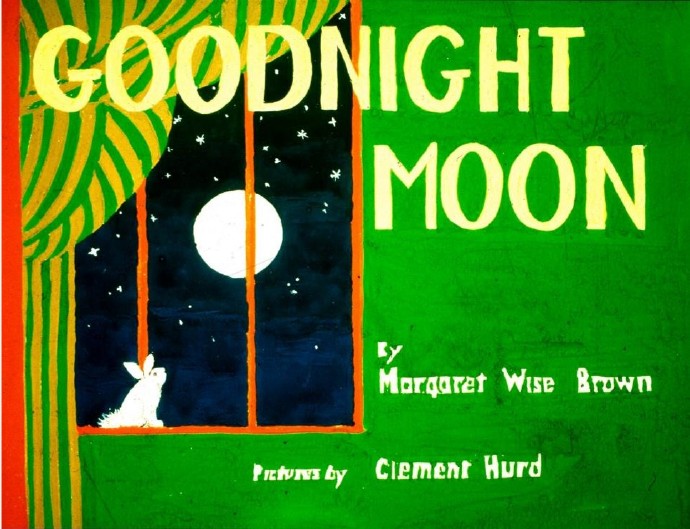
The cover of Goodnight Moon was originally designed, but was modified to this at Ursula’s suggestion:
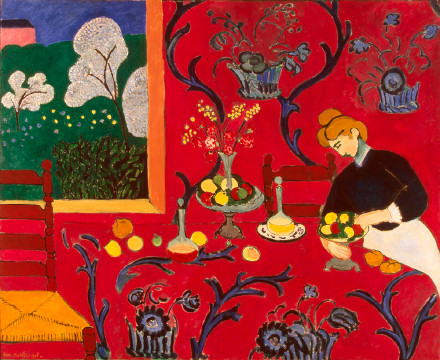
Matisse’s famous painting “The Red House”
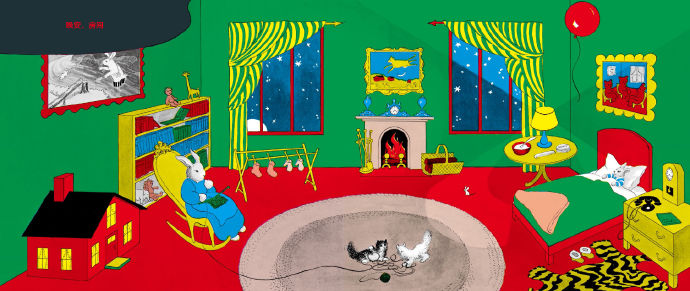
One of the pages from Goodnight Moon
A psychologist once shared a reading story:18The month-old boy listened to his mother read “Goodnight, Moon” and the picture was spread out in the darkened room.“Large Green Room”, the text in the lower right corner is“Good night, all sounds”The little bunny on the bed finally fell asleep. The little boy used his left foot to press against the left side of the painting, while trying to place his right foot on top. In this strenuous struggle, he actually cried. It took his mother a while to realize that the boy was trying to escape into that warm, adorable world! What kind of magic is this?
Goodnight Moon is now incredibly famous and a bestseller worldwide, with numerous papers and books devoted to its study. People revel in its captivating rhythm and marvel at the bold colors. The details within the pictures have been meticulously explored, with speculations raised about the order and placement of their appearances and the psychological implications they might represent. For example, there’s been a lively discussion about why the telephone mentioned on the first page (in the English version) isn’t included in the list of people saying goodnight. All of this adds a layer of alluring mystery to the picture book. I wonder if anyone still remembers how lonely such a simple and unconventional masterpiece must have been during Margaret’s lifetime.
1952Year11moon13Margaret·Weisz·Brown died dramatically from an embolism while recovering from a minor surgery while traveling in France.42At that time, not many readers had read Goodnight Moon.
The book sold until1960It was not until the 1960s that the number of picture books increased, and by the mid-1960s it had become a popular picture book. Apparently, the readers who had grown up were looking for this book again, hoping to relive their childhood dreams with their children. Inspired by this, Ursula invited Clement to redraw The Runaway Bunny.1972A new edition (the version we read today) was published in 1996 to echo the success of Goodnight Moon. Later, the book was finally included in the New York Public Library’s recommended picture book catalog. After generations of readers snowballed in popularity, the book became a hit in1990At the beginning of the year, the cumulative sales volume exceeded400Wan, enter21A century later, it exceeded200010,000. Eric·Carl once said with emotion: “This is what Margaret and I have in common: it was the children who chose us, not the experts, not the librarians, not the teachers, not the grandmothers. This is not just my opinion, I know it is like this.”
Clement and Percy benefited greatly from this book. Although they had written many children’s books, most readers and researchers remembered Clement because of this book. Many people even mistakenly believed that the text was written by his wife. Whenever this happened, Percy would happily and proudly tell them: This book was written by our lovely and creative friend Margaret. It was also because of the increasing royalties brought by this book that they retired at a relatively young age. Their son Thatcher·Heard also finally inherited his father’s career and became an artist who created picture books. He said that his father was very happy about the best-selling of “Goodnight Moon” and would often write the sales figures on small pieces of paper and show them to him.
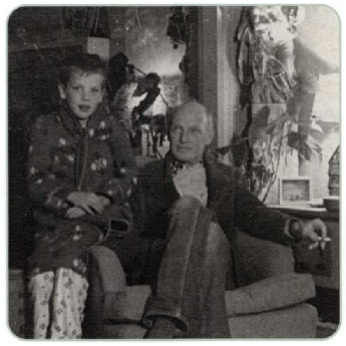
Clement Hurd and his son Thatcher Hurd (who also later became an illustrator)
1988Year2moon5Clement Hurd died peacefully in a San Francisco hospital on80age.
Written in2014Year5moon9Beijing
2014Year6moon12Daily Update
☆Highlights:
Below are photos of Clement Hurd from the 1940s, used as accompanying photographs for his works. One is the original, and the other is a photo officially altered by the publisher. Can you tell the difference? What’s the difference between the two? There’s an interesting story behind this.
